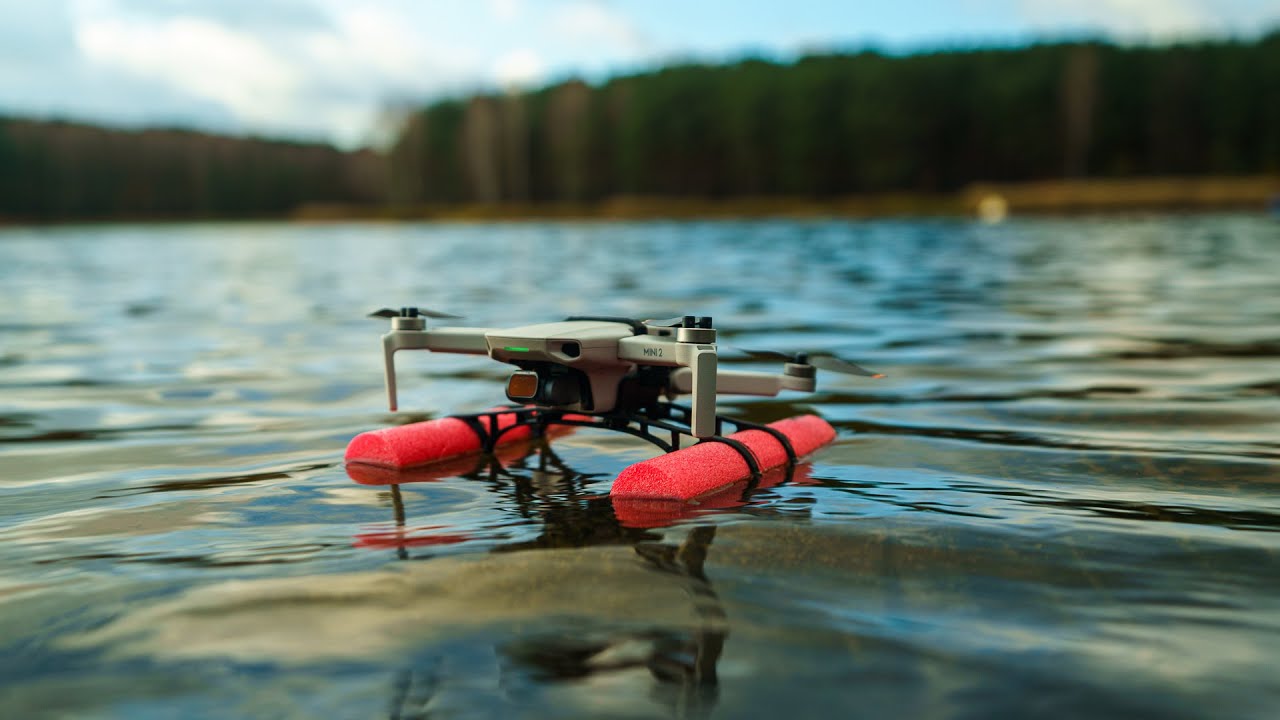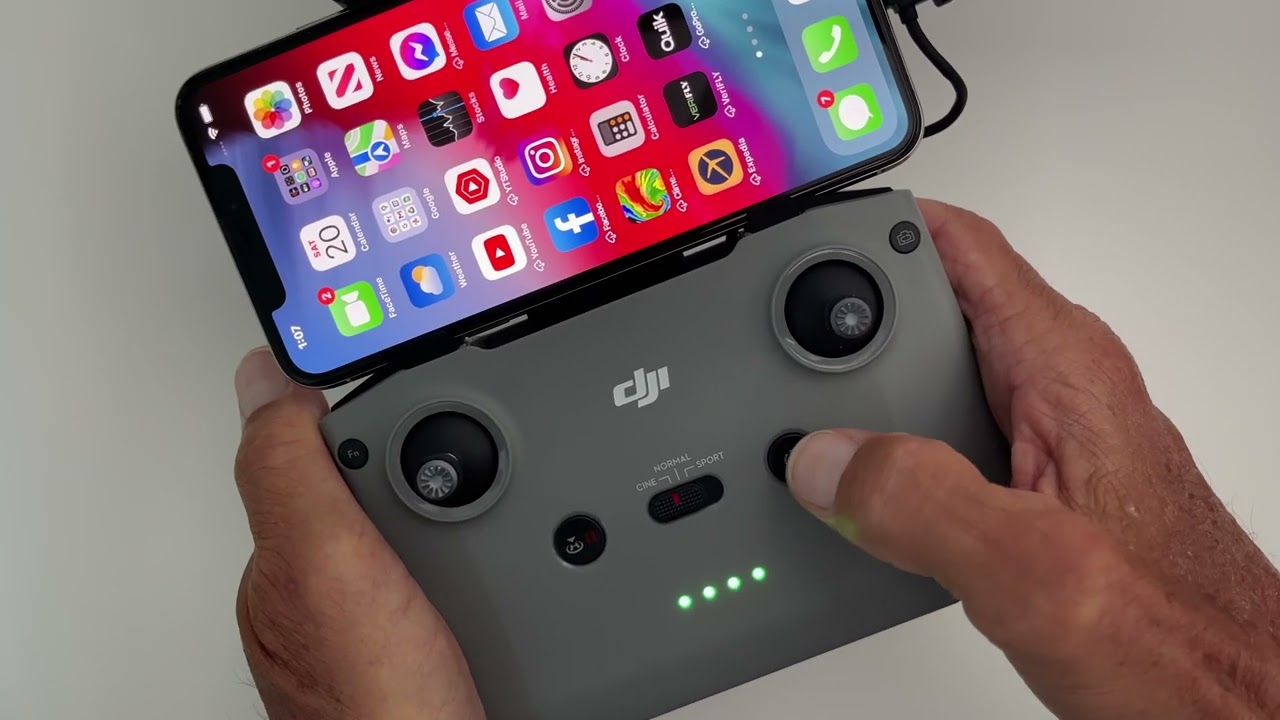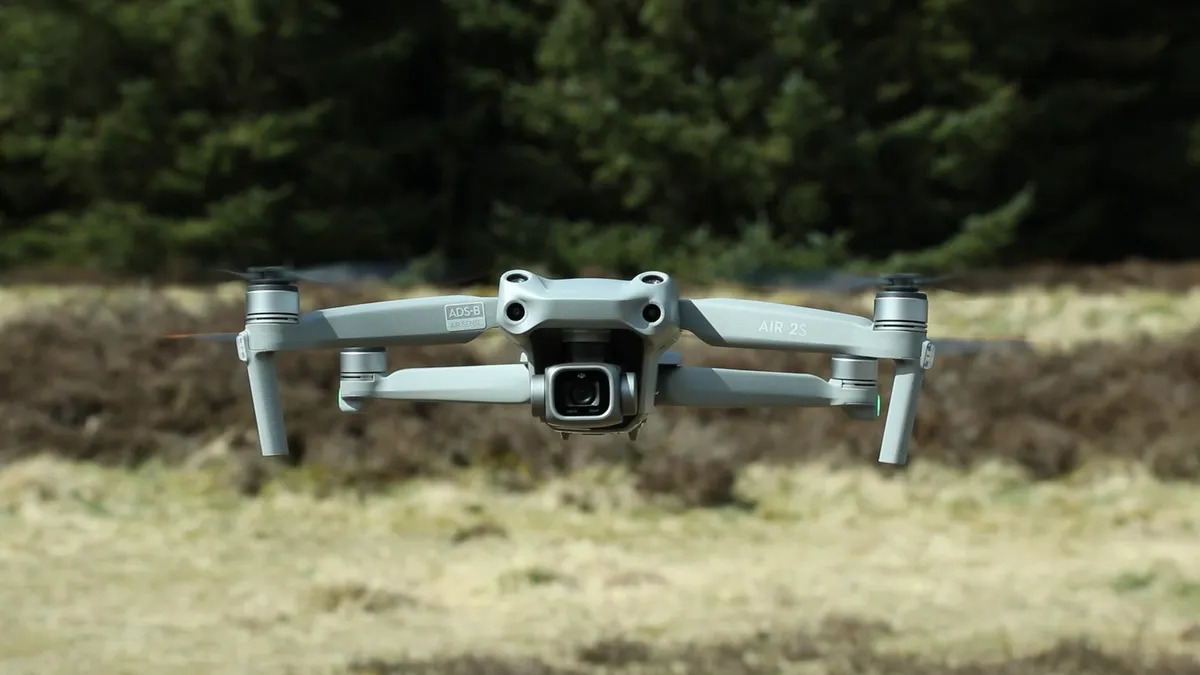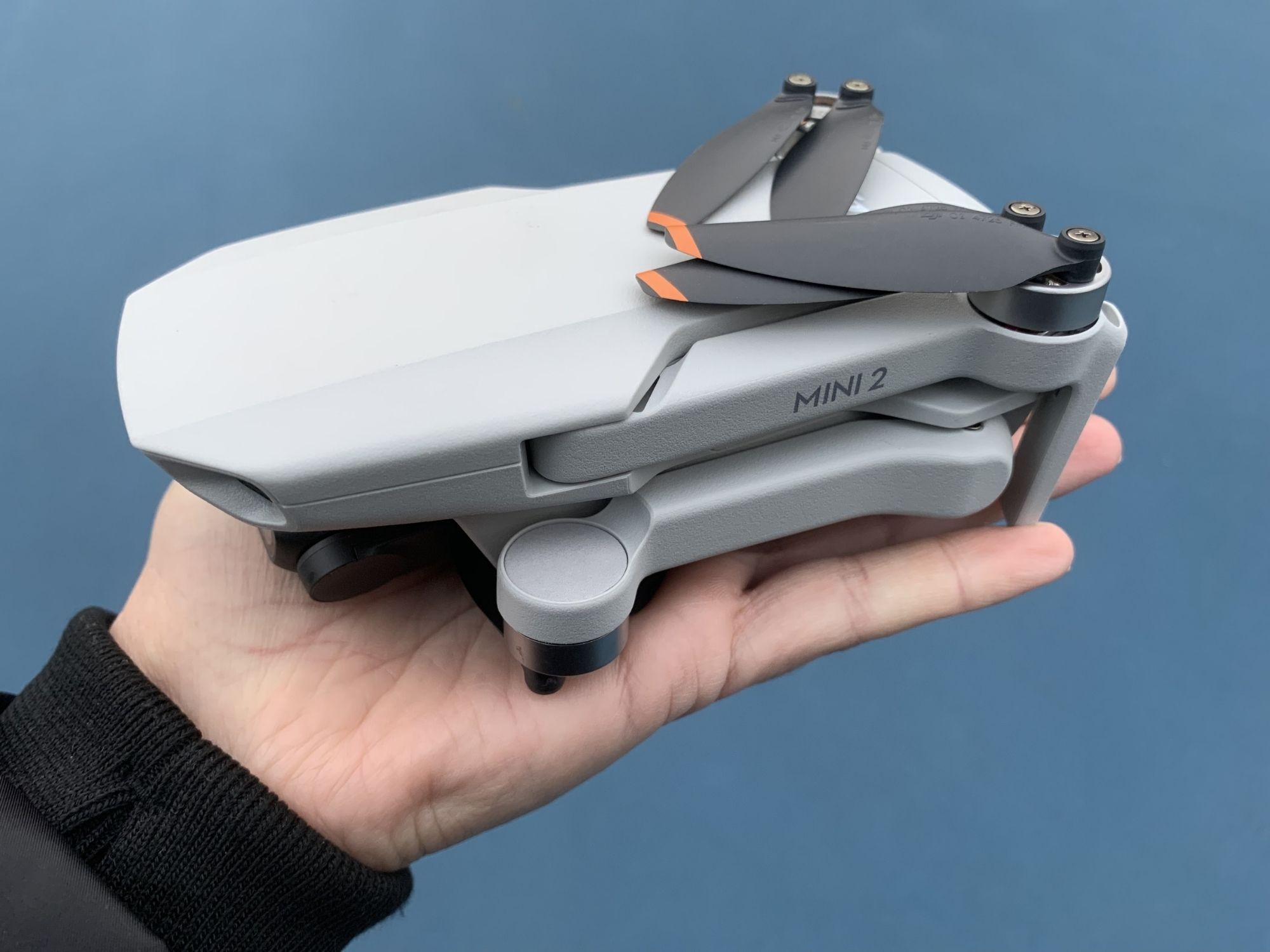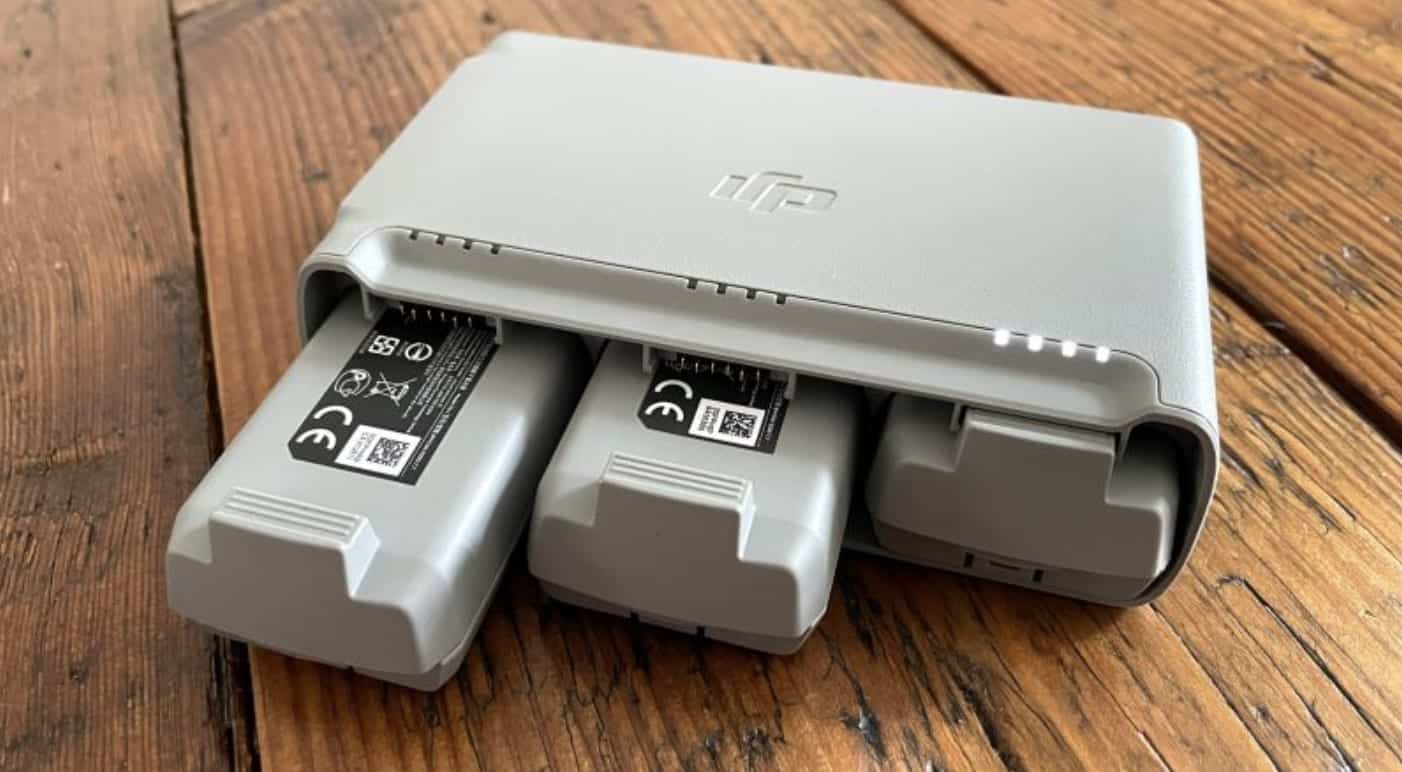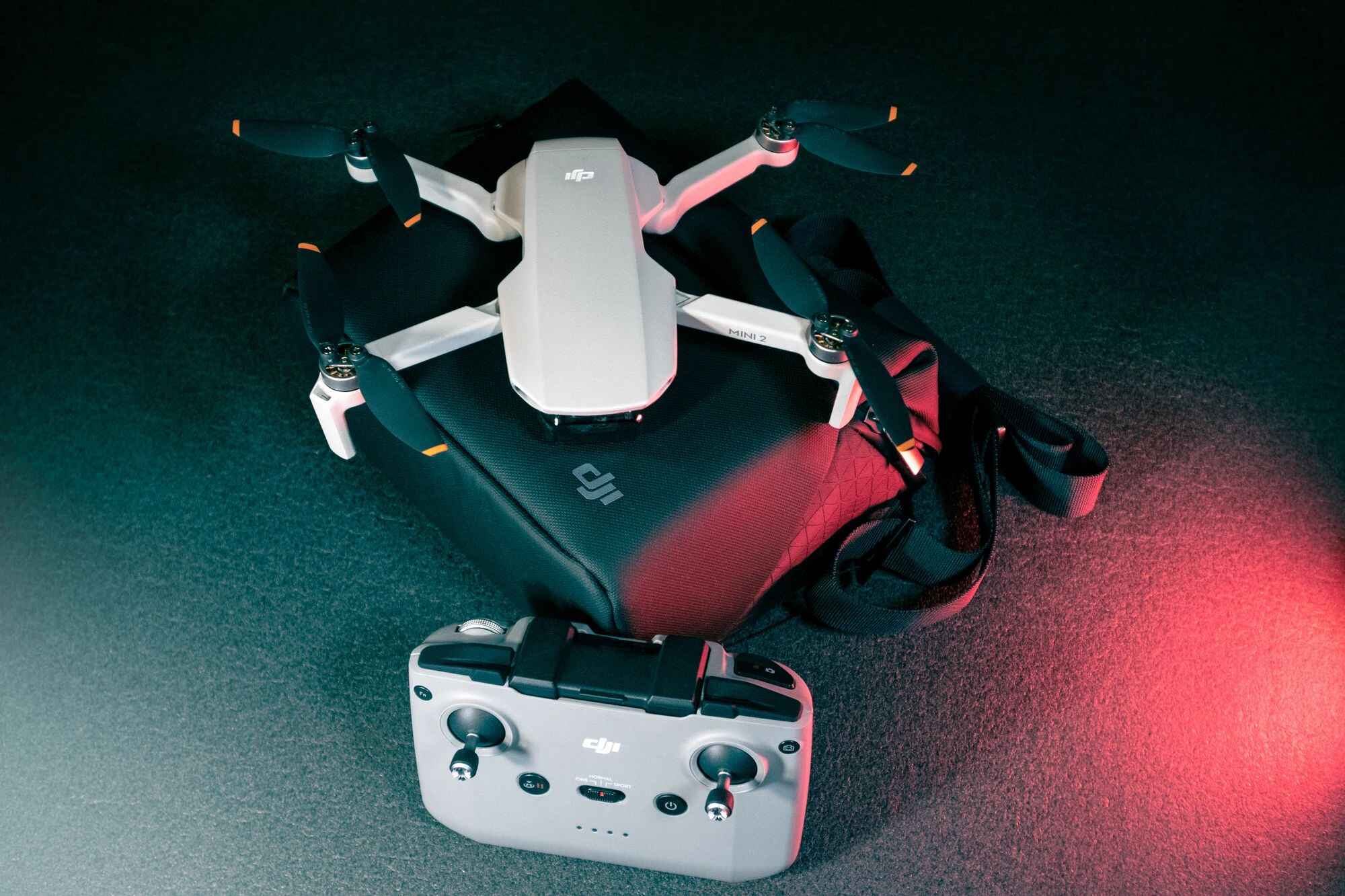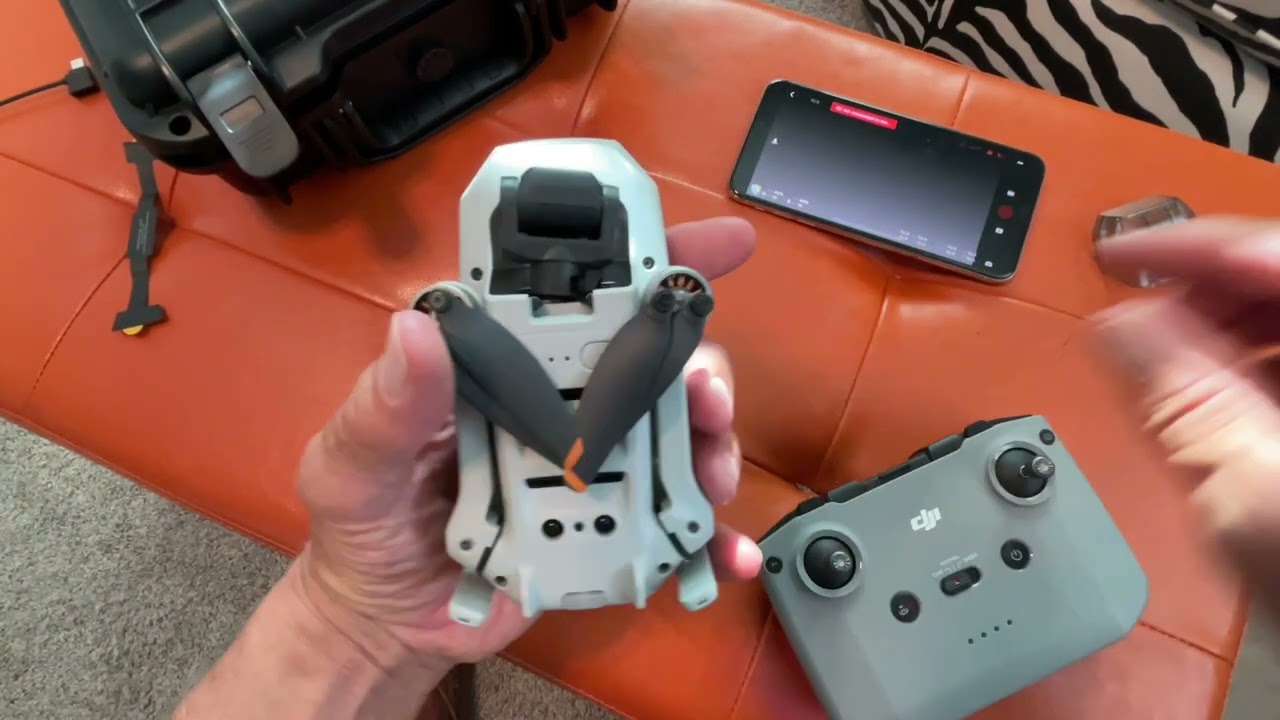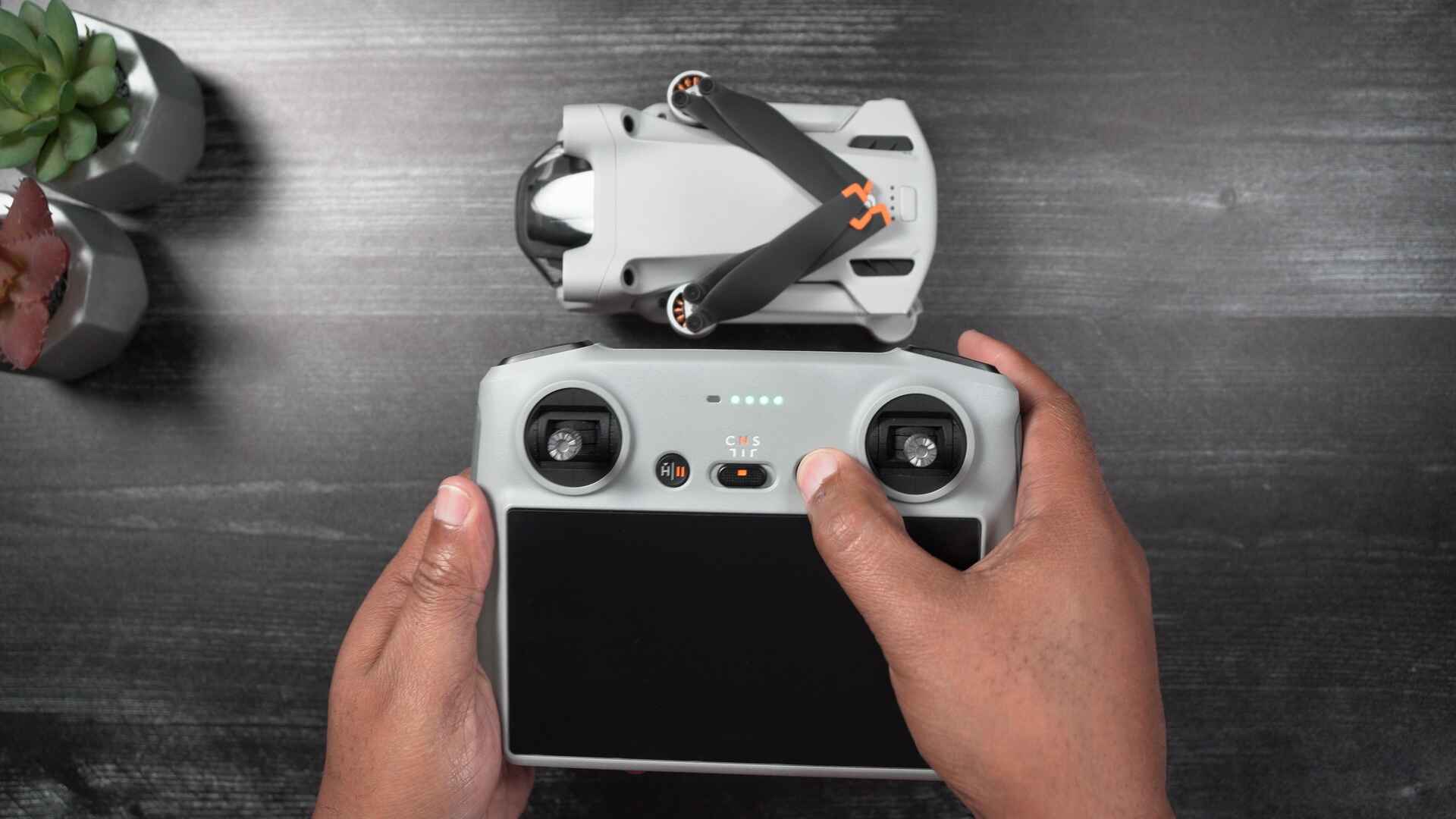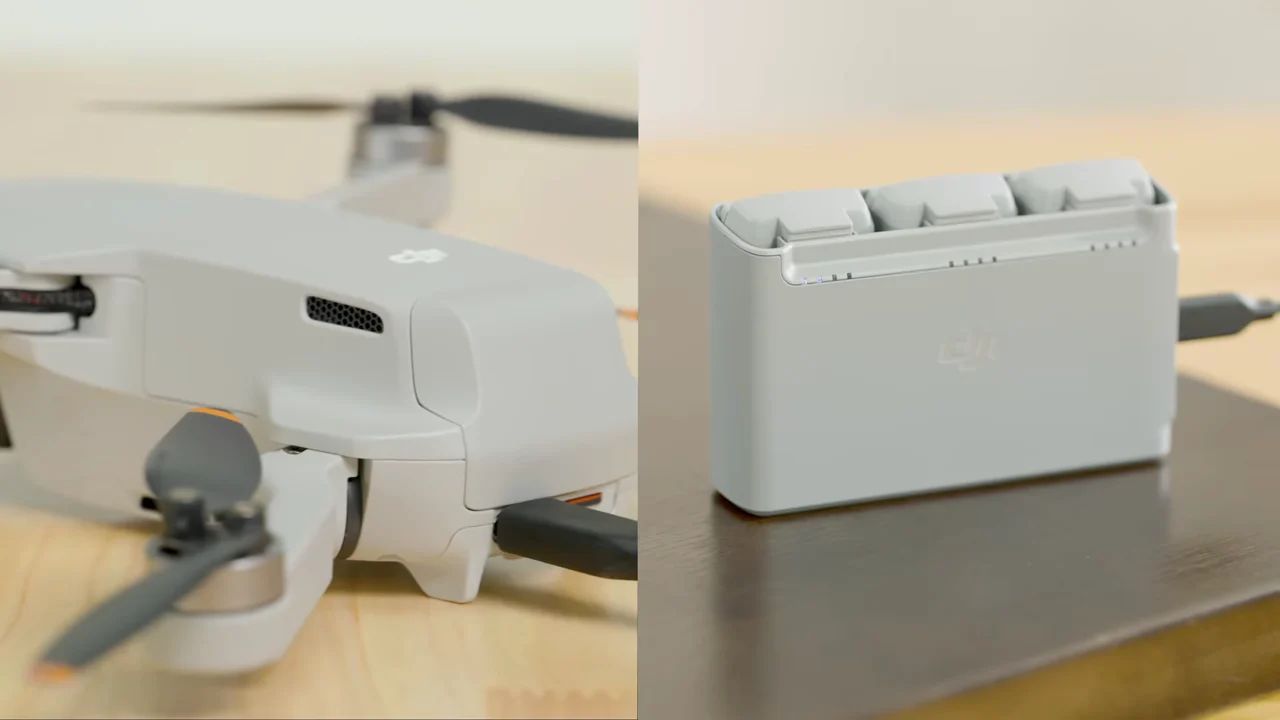Introduction
Welcome to this comprehensive guide on how to land the DJI Mini 2, a popular and highly capable drone for aerial photography and videography. As a drone enthusiast, you know that the landing process is crucial for the safety and longevity of your device. Whether you’re a beginner or an experienced pilot, mastering the art of landing will ensure a smooth and controlled descent, minimizing any potential damage or accidents.
In this article, we will cover everything you need to know about landing the DJI Mini 2. From understanding the drone’s landing gear and choosing the right landing spot, to utilizing the precision landing feature and maintaining control during landing, we’ve got you covered. We’ll also provide tips for landing in challenging conditions and offer a post-landing routine to ensure your drone stays in optimal condition.
So, let’s dive in and explore the various aspects of landing the DJI Mini 2 to ensure a safe and successful flight from takeoff to touchdown.
Pre-flight Checklist
Before you take off with your DJI Mini 2, it’s essential to go through a pre-flight checklist to ensure that everything is in order. This checklist will help you avoid any potential issues and guarantee a safe and smooth flight experience. Here are some key items to include in your pre-flight routine:
- Check the Battery: Make sure the drone’s battery is fully charged and securely attached. It’s always a good idea to carry spare batteries for longer flights.
- Inspect the Propellers: Examine the propellers for any signs of damage, such as cracks or chips. Replace any worn-out propellers before takeoff.
- Verify GPS Signal: Ensure that the DJI Mini 2 has a strong GPS signal before launching it. This will aid in stability and accuracy during flight.
- Clear the Flight Area: Check for any obstacles or hazards in the flight area, such as trees, power lines, or buildings. It’s important to have a clear and open space for takeoff and landing.
- Calibrate the Compass: Follow the DJI Mini 2’s instructions to calibrate the compass. This step is essential for accurate navigation and control.
- Update Firmware: Ensure that the drone’s firmware, as well as the remote controller’s firmware, is up to date. This will optimize performance and address any known issues.
- Check Camera Settings: Double-check the camera settings to ensure they are adjusted to your desired specifications, such as resolution, frame rate, and white balance.
- Review Flight Regulations: Familiarize yourself with local flight regulations and restrictions, including any no-fly zones or altitude limitations.
By diligently going through this pre-flight checklist, you can minimize the risk of any mid-flight surprises and enjoy a worry-free flight with your DJI Mini 2.
Understanding the DJI Mini 2’s Landing Gear
The landing gear of the DJI Mini 2 is an important component that plays a crucial role in ensuring a safe and stable landing. It consists of four legs located on the underside of the drone, and each leg is equipped with a landing pad to provide stability and protection during landing. Understanding the design and functionality of the landing gear will help you optimize your landing technique and protect your drone from potential damages.
The landing gear of the DJI Mini 2 is retractable, meaning that it can be folded up during flight to minimize the overall size of the drone. This feature allows for easier transport and storage of the device. When preparing for landing, the landing gear automatically extends, providing a wider base for stability.
It’s important to note that the landing gear of the DJI Mini 2 is not adjustable in terms of height. Therefore, you must choose a landing spot with a suitable surface and ensure that it is clear of any obstructions or debris. The landing pads on each leg of the drone are made of durable material to protect the sensors and other components during landing.
When landing, make sure that all four legs touch the ground simultaneously to maintain balance and stability. This will help prevent the drone from tipping over and potentially getting damaged. Try to land on a flat and level surface, avoiding rough terrain or areas with tall grass. A smooth landing surface will ensure a controlled descent and prevent any unnecessary jolts or impacts.
Understanding the design and functionality of the DJI Mini 2’s landing gear is crucial for a successful landing. By taking care to choose an appropriate landing spot and ensuring a stable touchdown, you can protect your drone and enjoy many more flights to come.
Choosing the Right Landing Spot
When it comes to landing your DJI Mini 2, selecting the right landing spot is crucial for a safe and controlled touchdown. Choosing a suitable location will not only protect your drone but also ensure the safety of people and property in the vicinity. Here are some factors to consider when deciding on the perfect landing spot:
- Flat and Clear Area: Look for a flat and open area, free from any obstacles or debris. This will provide a stable surface for landing and minimize the risk of the drone tipping over or getting damaged.
- Avoid Power Lines and Structures: Make sure your landing spot is away from power lines, buildings, or any other structures that could interfere with the drone’s descent. Power lines, in particular, pose a significant risk, so keep a safe distance to avoid any potential entanglement.
- Consider the Wind: Take into account the wind conditions when selecting a landing spot. Look for a location that provides some shelter from strong gusts of wind. This will help maintain stability during the landing process.
- Clear Approach Path: Ensure that the path to the landing spot is clear of any obstacles. This will allow for a smooth and unimpeded descent and reduce the risk of collisions or accidents.
- Choose a Visible Area: Select a landing spot that is easily visible to you as the pilot. This will allow you to maintain visual contact with the drone throughout the landing process and make any necessary adjustments if needed.
- Consider Landing Pads: If you’re in a location where the ground surface is rough or unsuitable for landing, consider using landing pads. These portable mats provide a flat and stable surface for the drone to touch down, protecting it from debris and potential damage.
By carefully selecting the right landing spot, you can ensure a smooth and safe landing for your DJI Mini 2. Remember to always prioritize safety, both for your drone and the surrounding environment, and be mindful of any local regulations and restrictions when choosing a landing location.
Initiating the Landing Process
When it’s time to bring your DJI Mini 2 back to the ground, initiating the landing process correctly is essential for a smooth and controlled descent. Here are the steps to follow to initiate a successful landing:
- Plan Ahead: Before you start the landing process, ensure that you have a clear plan in mind. Consider the wind direction, landing spot, and any potential obstacles in the area.
- Begin the Descent: Gradually reduce the altitude of your drone by smoothly lowering the throttle stick or using the descent control feature on your remote controller.
- Maintain Visual Contact: Keep your eyes on the drone at all times during the landing process. By maintaining visual contact, you can make any necessary adjustments to ensure a safe descent.
- Synchronize the Landing Gear: If your DJI Mini 2 has retractable landing gear, make sure it’s synchronized and extended before touchdown. This will provide stability and protection during the landing.
- Control the Speed: Adjust the speed of descent to ensure a smooth touchdown. Avoid rapid or abrupt movements, as they can lead to an unstable landing.
- Use the Visual Positioning System (VPS): If available on your DJI Mini 2 model, utilize the VPS technology to enhance the accuracy and stability of the landing process. This system uses sensors to detect the ground and adjust the drone’s altitude accordingly.
- Monitor for Obstacles: Be vigilant and watch out for any obstacles or hazards that may appear during the descent. Avoid landing near people, animals, or fragile objects.
- Prepare for Touchdown: As the drone approaches the landing spot, be prepared to gently touch down on the ground. Maintain control and ensure that all legs of the landing gear make contact simultaneously.
By following these steps, you can initiate the landing process smoothly and safely. It’s important to practice and gain experience to become more confident in your landing abilities. Remember, a controlled descent is key to protecting your DJI Mini 2 and ensuring its longevity.
Utilizing the Precision Landing Feature
The DJI Mini 2 is equipped with a precision landing feature that can greatly assist in achieving an accurate and controlled landing. This feature utilizes the drone’s onboard sensors and GPS technology to autonomously guide the drone back to its takeoff point. Here’s how you can make the most of the precision landing feature:
1. Activate the Precision Landing Feature: Before takeoff, ensure that the precision landing feature is enabled in the drone’s settings. This will allow the DJI Mini 2 to record its takeoff location and use it as a reference point for returning.
2. Fly within GPS Signal Range: To successfully utilize the precision landing feature, maintain a strong GPS signal throughout the flight. This will ensure accurate positioning and enhance the effectiveness of the landing feature.
3. Conduct a Test Flight: If you’re new to the DJI Mini 2 or haven’t used the precision landing feature before, it’s recommended to conduct a test flight first. Familiarize yourself with the drone’s behavior during precision landings and gain confidence in its capabilities.
4. Initiate the Return-to-Home (RTH) Function: When you’re ready to land, activate the Return-to-Home function on your remote controller. This will prompt the DJI Mini 2 to start its automated return journey, utilizing the precision landing feature to guide it back to the takeoff point.
5. Observe the Landing Sequence: During the precision landing process, closely observe the drone’s movements and monitor its descent. The DJI Mini 2 will adjust its altitude and position based on the recorded takeoff location and GPS coordinates.
6. Be Prepared to Take Over: While the precision landing feature provides a high level of accuracy, it’s important to be prepared to take control of the drone manually if needed. Stay vigilant and be ready to make any necessary adjustments, especially if the landing spot is uneven or obstructed.
7. Practice and Refine: Regularly practicing precision landings will help you refine your skills and improve the accuracy of the process. Experiment with different flight conditions and landing scenarios to become more familiar with the capabilities of the precision landing feature.
By utilizing the precision landing feature of the DJI Mini 2, you can achieve a precise and controlled landing with ease. However, it’s important to remember that this feature should supplement your piloting skills and not replace them entirely. Always remain attentive and ready to take control of the drone when necessary.
Maintaining Control During Landing
Maintaining control of your DJI Mini 2 during the landing process is crucial for a safe and successful touchdown. Here are some tips to help you maintain control and ensure a smooth landing:
- Monitor the Drone’s Descent: Keep a close eye on the drone as it descends. Use the live feed on your remote controller or smartphone to maintain visual contact and make any necessary adjustments.
- Adjust the Descent Speed: Control the speed of descent by adjusting the throttle stick or using the descent control feature on your remote controller. Gradually decrease the altitude to avoid rapid or abrupt movements.
- Steady Your Hands: While landing, it’s essential to have steady hands on the remote controller. Avoid sudden jerks or movements and maintain a smooth and controlled grip.
- Be Mindful of Wind: Wind conditions can significantly impact the stability of the drone during landing. Be prepared to compensate for gusts of wind by making small adjustments to the controller’s sticks.
- Utilize Altitude Hold: If your DJI Mini 2 has altitude hold feature, engage it during the landing process. This feature will help keep the drone at a constant height, making it easier to control and preventing sudden drops.
- Watch out for Obstacles: Stay vigilant and be on the lookout for any obstacles or hazards in the landing area. Adjust the trajectory of the drone to avoid collisions and ensure a safe descent.
- Practice Precision Landings: Regularly practicing precision landings will enhance your control and coordination during the landing process. Experiment with different heights, speeds, and landing spots to refine your skills.
- Stay Calm and Focused: Keep calm and stay focused throughout the landing process. Avoid distractions and maintain a clear and composed mindset to make informed decisions and adjustments.
By implementing these tips, you can maintain control of your DJI Mini 2 and ensure a smooth and controlled landing. Remember, practice makes perfect, so regularly honing your skills will lead to more confident and precise landings.
Landing in Challenging Conditions
As a drone pilot, you may encounter challenging conditions that require extra caution and skill during the landing process. Here are some tips to help you navigate and safely land your DJI Mini 2 in challenging conditions:
- Strong Winds: If you’re dealing with strong winds, it’s crucial to be aware of the effect it can have on the drone’s stability during landing. Reduce the descent speed, make small adjustments to counter gusts, and consider landing in a more sheltered area to minimize the impact of the wind.
- Rain or Moisture: When landing in wet or rainy conditions, exercise caution to prevent water damage to the drone. Choose a dry landing spot, avoid landing near puddles or bodies of water, and consider using a landing pad or dry cloth to keep the drone’s underside dry during the landing process.
- Low Light or Nighttime: Landing in low light or at night can present visibility challenges. Ensure that you have adequate lighting to orient yourself and monitor the drone’s descent. Utilize the drone’s LED lights or attach additional lights to improve visibility.
- Uneven Terrain: In situations where the landing surface is uneven or rocky, exercise extra caution to ensure a stable descent. Lower the descent speed and carefully maneuver the drone to avoid potential damage caused by a rough landing.
- Confined Spaces: When landing in tight or confined spaces, it’s important to maintain precise control and avoid obstacles. Use the drone’s obstacle avoidance system (if available) to aid in navigating narrow spaces and ensure a safe landing.
- High Altitude: Landing at high altitudes can impact the drone’s performance due to thinner air and reduced lift. Be mindful of the decreased maneuverability and adjust your landing approach accordingly. Consider extending the landing distance to compensate for reduced lift capabilities.
Remember, landing in challenging conditions requires careful planning, patience, and adaptability. Assess the environment, consider the risks, and make appropriate adjustments to ensure a safe and controlled landing with your DJI Mini 2.
Post-Landing Routine and Safety Tips
Once your DJI Mini 2 has safely touched down, it’s important to follow a post-landing routine to ensure the longevity of your drone and practice responsible drone ownership. Here are some essential post-landing routine and safety tips to keep in mind:
- Power Down the Drone: Switch off the power button on your DJI Mini 2 to prevent any accidental movements or operations after landing.
- Inspect the Drone: Conduct a visual inspection of the drone for any visible damage or signs of wear and tear. Check the propellers, landing gear, and other components to ensure they are in good condition.
- Clean the Drone: If the drone has come into contact with dirt, dust, or moisture during the flight, use a microfiber cloth or compressed air to gently clean the surfaces. Avoid using water or harsh cleaning agents that may damage the drone’s delicate components.
- Remove the Battery: If you won’t be using the drone for an extended period or if you’re storing it, remove the battery. This helps prevent any potential battery drainage or damage while the drone is not in use.
- Download and Review Footage: If you’ve captured photos or videos during the flight, download the footage to your computer for review and editing. Backing up your files ensures you won’t lose any valuable content.
- Follow Local Regulations: Familiarize yourself with local regulations regarding drone flights and abide by them. Familiarize yourself with any specific guidelines or restrictions in your area.
- Respect Privacy and Property: Be mindful of privacy and respect the rights of others. Avoid flying over private property without permission and adhere to guidelines on maintaining a safe distance from people and buildings.
- Stay Updated on Firmware: Regularly check for firmware updates for both the drone and the remote controller. Keeping your equipment up to date ensures optimal performance and addresses any known issues or vulnerabilities.
- Continue Learning and Practicing: Enhance your piloting skills and knowledge by continuing to learn and practice with your DJI Mini 2. Explore advanced flight techniques, experiment with different camera settings, and stay up-to-date with the latest drone advancements.
By following these post-landing routine and safety tips, you can protect your drone, ensure responsible drone operation, and enjoy many more successful flights with your DJI Mini 2.
Conclusion
Congratulations! You now have the knowledge and understanding to confidently land your DJI Mini 2 drone. By following the tips and guidelines outlined in this guide, you can ensure a safe and controlled descent, protecting your drone and those around you.
From understanding the DJI Mini 2’s landing gear and choosing the right landing spot to initiating the landing process and utilizing the precision landing feature, each step plays a crucial role in achieving a successful landing. Additionally, maintaining control during landing, navigating challenging conditions, and following a post-landing routine are essential for the longevity and optimal performance of your drone.
Remember, practice makes perfect. Enhance your skills by regularly flying your DJI Mini 2 and gaining experience in various landing scenarios. Embrace continuous learning and stay updated on drone regulations and advancements to ensure responsible and enjoyable flying experiences.
Whether you’re a beginner or an experienced pilot, mastering the art of landing is a skill that will serve you well in all your drone flights. So get out there, explore the skies, and capture stunning aerial footage with your DJI Mini 2!







